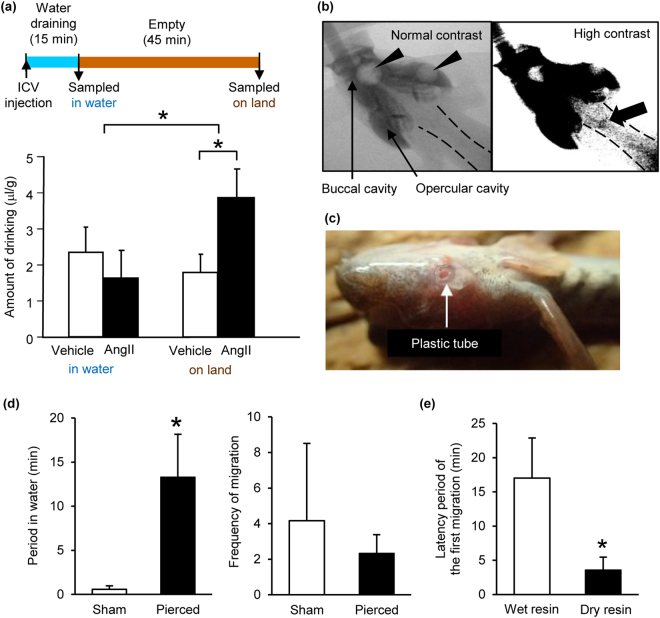Figure 4.
Loss of buccal/opercular water by angiotensin II (AngII) and its induction of migration to water. (a) The effect of AngII on amount of drinking on land. The diagram shows the experimental design. After the intracerebroventricular injection of AngII or vehicle, water was completely drained out for 15 min. Mudskippers could hold water in the buccal/opercular cavity and drink it even in the empty tank. Two-way factorial ANOVA was used for statistical analysis and the interaction was significant. *P < 0.05, n = 6. (b) X-ray images showing the presence of water (deep gray) in the buccal and opercular cavity. Arrow heads indicate air in these cavities. A thick arrow in the high-contrast image shows water in the anterior part of the oesophagus before swallowing (see Supplementary Movie 1). Broken lines show the gastrointestinal tracts. (c) A picture showing a tube which pierced the operculum to artificially eliminate buccal/opercular water. (d) Amphibious behaviour of ‘pierced’ mudskippers for 30 min. *P < 0.05 with unpaired Wilcoxon signed-rank test, n = 6. (e) Effect of decreased buccal/opercular water by placing water-absorptive dry resin (‘dry resin’) on amphibious behaviour. Controls were treated with the water pre-absorbed resin (‘wet resin’). *P < 0.05 with paired Wilcoxon signed-rank test, n = 8. Data are shown as mean ± s.e.m.

